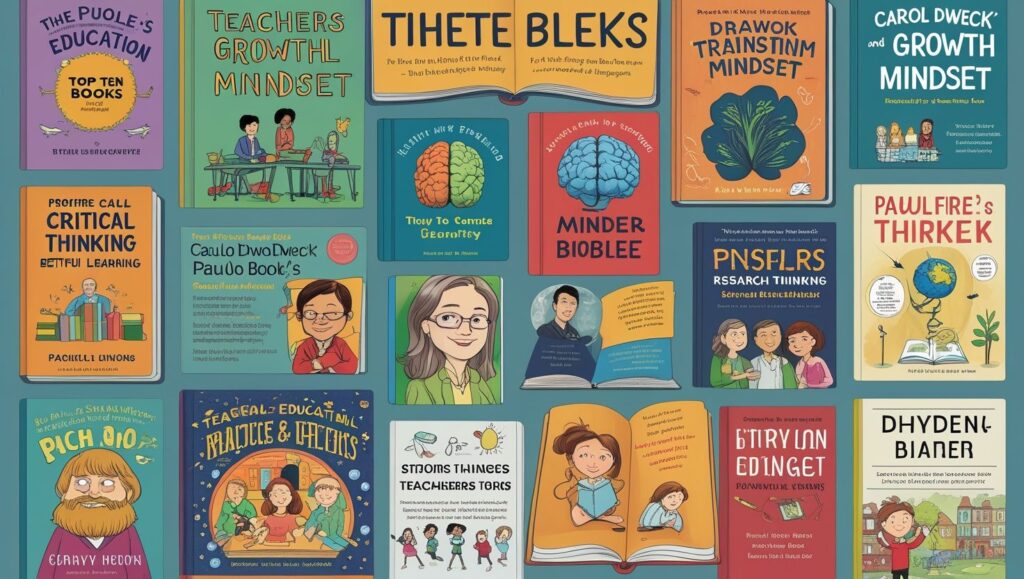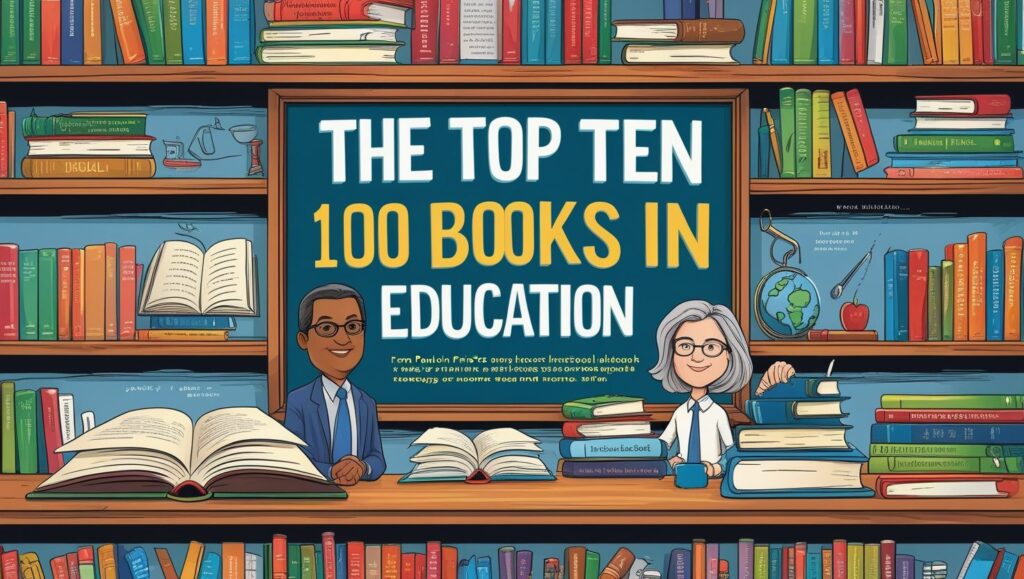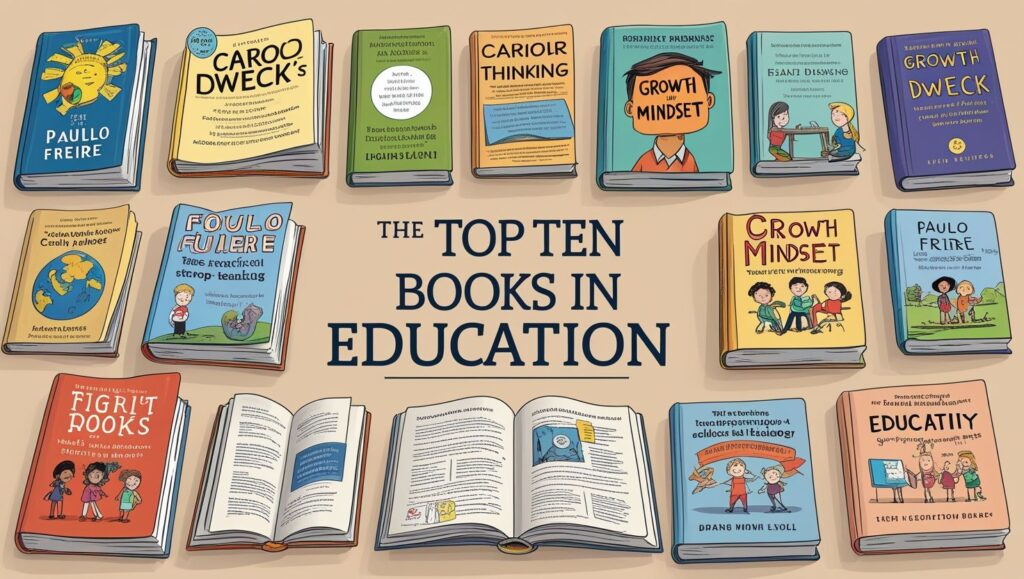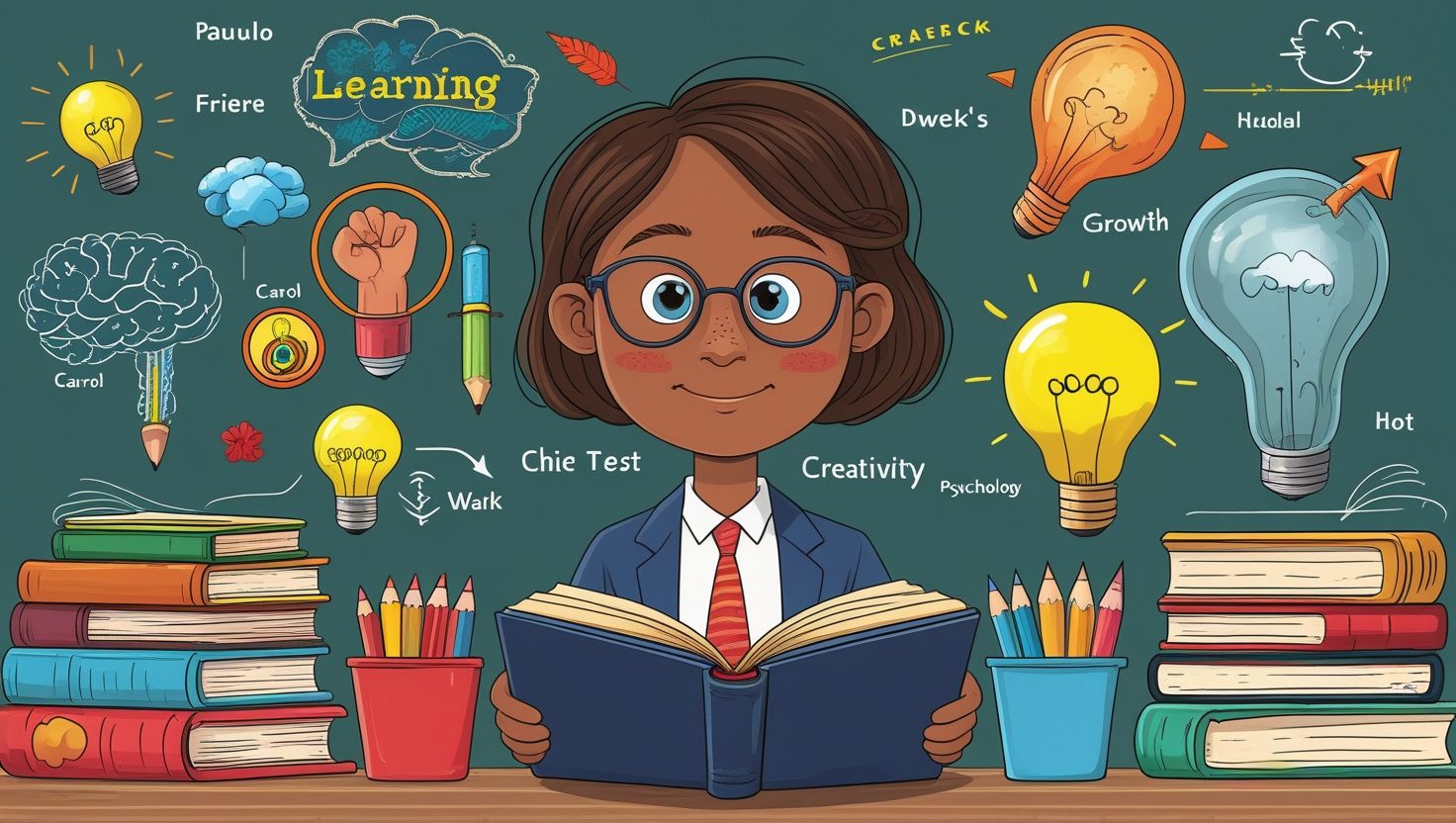Introduction
Top Ten Books in Education, Education has always been shaped by the wisdom of great thinkers, educators, and researchers. Books in education provide teachers, students, and leaders with valuable insights into learning methods, classroom management, and modern teaching strategies. Over time, several works have become essential reading for anyone interested in improving the field of education. They offer guidance on pedagogy, creativity, learning psychology, and child development. These books stand out not just for their theories but also for their practicality in real classrooms.
Furthermore, they bridge the gap between research and practice, making them influential in academic and professional settings. Teachers rely on these works to find inspiration, while students gain fresh perspectives on learning. Parents and policymakers also benefit from these writings. Therefore, exploring the top ten books in education provides a deeper understanding of how learning evolves. The following list highlights the most impactful books shaping education today.
1. “Pedagogy of the Oppressed” by Paulo Freire
“Pedagogy of the Oppressed” remains one of the most influential books in education. Written by Paulo Freire in 1968, it challenges traditional approaches to teaching. Freire argues that education should not be about transferring knowledge but rather about dialogue and critical thinking. He emphasizes that learners should not be passive recipients but active participants. Furthermore, the book introduces the concept of “banking education,” where teachers deposit knowledge into students, which he strongly criticizes.
Instead, Freire calls for a problem-posing method, encouraging learners to question and analyze the world. This approach empowers students to become critical thinkers and active members of society. The book has inspired countless educators, especially those working in underprivileged communities. Additionally, it emphasizes the link between education and social justice. Even decades after its publication, it continues to influence teachers worldwide. Without doubt, this book remains a cornerstone in modern educational philosophy.
2. “How Children Fail” by John Holt
John Holt’s “How Children Fail” is a groundbreaking book that examines why many children struggle in school. Published in 1964, the book highlights how fear, pressure, and rigid systems can prevent genuine learning. Holt shares real classroom observations, revealing that children often hide their confusion and fears to please teachers. Furthermore, he argues that traditional grading systems and strict testing kill creativity and curiosity. Holt believed that students fail not because they lack ability but because the system discourages them.
His book advocates for understanding students’ emotional needs and creating safe learning environments. It also suggests that teachers should focus on guiding children rather than controlling them. Over the years, the book has become an important resource for progressive educators. Additionally, it sparked the homeschooling and unschooling movements. Teachers, parents, and education reformers still use Holt’s insights to promote student-centered learning and foster natural curiosity.

3. “Experience and Education” by John Dewey
John Dewey’s “Experience and Education,” published in 1938, remains a classic in educational philosophy. Dewey strongly believed that education should connect with real-life experiences. He criticized traditional rote learning for being disconnected from students’ lives. Furthermore, Dewey argued that meaningful learning happens when learners engage actively with their environment. His progressive approach emphasizes problem-solving, inquiry, and critical thinking.
This short yet powerful book bridges theory and practice by presenting a balanced view of traditional and progressive education. It reminds educators that both discipline and creativity are essential in classrooms. Moreover, Dewey’s ideas shaped project-based learning and experiential learning models widely used today. Teachers appreciate this book for its clarity and relevance, while researchers value its philosophical depth. By focusing on experience as the foundation of education, Dewey encourages schools to prepare students for active participation in democratic society. Ultimately, his work remains timeless and inspiring.
4. “Mindset: The New Psychology of Success” by Carol S. Dweck
Carol Dweck’s “Mindset” has revolutionized the way educators understand learning and motivation. Published in 2006, the book explores the concepts of fixed mindset and growth mindset. A fixed mindset assumes abilities are unchangeable, while a growth mindset believes skills can be developed with effort. Furthermore, Dweck explains how teachers, parents, and leaders can shape students’ attitudes toward challenges. With a growth mindset, students see failure as an opportunity to learn rather than a reason to give up. This shift significantly improves resilience, motivation, and achievement. The book includes research findings and practical examples, making it accessible for educators and parents alike.
Many schools have incorporated growth mindset strategies into their teaching approaches. Additionally, the book has inspired workshops and programs across the globe. By encouraging learners to embrace challenges, “Mindset” helps create classrooms where persistence and curiosity thrive. It is essential reading for modern educators.
5. “The Courage to Teach” by Parker J. Palmer
Parker J. Palmer’s “The Courage to Teach” focuses on the inner life of educators. First published in 1998, the book highlights the importance of authenticity and integrity in teaching. Palmer argues that good teaching comes not from techniques but from the identity and integrity of the teacher. Furthermore, he emphasizes that teachers must connect their inner values with their professional practice. The book blends philosophy, personal reflection, and practical wisdom, making it highly relatable. Palmer encourages teachers to embrace vulnerability and build meaningful relationships with students. This approach helps create classrooms filled with trust, respect, and engagement.
Moreover, “The Courage to Teach” addresses teacher burnout by reminding educators of their deeper purpose. Many educators find the book both healing and inspiring. Over the years, it has become a guide for sustaining passion in teaching. Ultimately, Palmer reminds teachers that their presence is as important as their knowledge.

6. “Theories of Childhood” by Carol Garhart Mooney
Carol Garhart Mooney’s “Theories of Childhood” introduces readers to the ideas of major child development theorists. Published in 2000, the book explains the contributions of thinkers such as Piaget, Vygotsky, Erikson, and Montessori. Furthermore, Mooney presents these complex theories in simple, practical ways. Teachers and parents can easily apply these ideas to real-world educational settings. The book highlights how children grow cognitively, socially, and emotionally. Additionally, it shows how different theories complement each other in guiding practice. Educators use it as a reference to design developmentally appropriate learning environments.
The text also emphasizes the importance of observation and understanding individual differences among children. Many early childhood educators consider this book essential for building strong foundations in teaching. Furthermore, its accessible style makes it ideal for students entering the field of education. By combining theory with practice, “Theories of Childhood” remains highly valuable in education.
7. “Teaching Community: A Pedagogy of Hope” by bell hooks
bell hooks’ “Teaching Community: A Pedagogy of Hope,” published in 2003, explores how education can transform lives. Hooks, a feminist scholar and activist, emphasizes the power of inclusive classrooms. She argues that teaching must address issues of race, gender, and class. Furthermore, the book highlights the importance of love, hope, and community in the learning process. hooks rejects traditional, authoritarian teaching and advocates for participatory, student-centered approaches. Teachers are encouraged to create safe spaces where every voice matters. This not only improves learning but also fosters respect and understanding.
Moreover, hooks shares personal stories and reflections, making her ideas practical and relatable. Many educators find her work powerful in promoting diversity and equity. Her book continues to inspire discussions on social justice in education. Ultimately, “Teaching Community” reminds us that education is not just about knowledge but also about human connection.
8. “Frames of Mind: The Theory of Multiple Intelligences” by Howard Gardner
Howard Gardner’s “Frames of Mind,” published in 1983, introduced the revolutionary theory of multiple intelligences. Gardner challenges the traditional view that intelligence is measured only by IQ tests. Instead, he identifies eight different intelligences, including linguistic, logical-mathematical, musical, bodily-kinesthetic, spatial, interpersonal, intrapersonal, and naturalistic.
Furthermore, Gardner explains that every learner has unique strengths and ways of understanding the world. His theory transformed how teachers design curriculum and assessments. Instead of relying on standardized testing, educators can support diverse learning styles. Moreover, the book empowers students who may not excel in traditional academic subjects but shine in other areas. Schools worldwide have applied Gardner’s ideas in teaching methods, especially in arts and project-based learning. Additionally, his theory continues to shape debates on educational reform. By expanding the definition of intelligence, “Frames of Mind” has had a lasting impact on classrooms everywhere.
9. “Why Don’t Students Like School?” by Daniel T. Willingham
Daniel T. Willingham’s “Why Don’t Students Like School?” offers practical insights into cognitive psychology and its role in learning. Published in 2009, the book addresses common classroom challenges. Willingham explains why students often struggle with attention, memory, and problem-solving. Furthermore, he provides research-based strategies that teachers can use to make lessons engaging and effective. The book argues that students enjoy learning when material is presented in ways that connect with their curiosity.
It also emphasizes the importance of understanding how the brain processes information. Teachers appreciate the book’s balance between theory and practical advice. Additionally, Willingham debunks myths about learning styles, focusing instead on evidence-based practices. His writing is clear, engaging, and directly relevant to classroom teaching. Many educators use the book as a guide to improve instruction and student motivation. Ultimately, it empowers teachers to create classrooms where learning feels exciting and meaningful.

10. “Visible Learning” by John Hattie
John Hattie’s “Visible Learning,” published in 2008, is based on an extensive review of educational research. The book summarizes findings from over 800 meta-analyses involving millions of students. Furthermore, it identifies which teaching strategies have the greatest impact on learning outcomes. Hattie introduces the concept of effect size, which helps teachers prioritize methods that work best. Key findings highlight the importance of feedback, teacher-student relationships, and student self-assessment.
Moreover, the book challenges educators to focus on evidence rather than trends. “Visible Learning” has influenced educational policies and professional development worldwide. Many schools use its framework to guide instructional strategies. Teachers find it helpful for reflecting on their own practice and making data-informed decisions. Additionally, it encourages educators to make learning visible by measuring progress and involving students in the process. Ultimately, Hattie’s research-driven approach continues to transform modern classrooms.
Conclusion
The top ten books in education discussed here have profoundly shaped the way we understand teaching and learning. From Paulo Freire’s call for social justice to John Dewey’s experiential learning, each work contributes unique insights. Furthermore, modern books like Carol Dweck’s “Mindset” and John Hattie’s “Visible Learning” highlight the importance of psychology and research in improving practice. These books remind us that education is both an art and a science.
They encourage teachers to embrace creativity while grounding their methods in evidence. Parents, policymakers, and learners also gain valuable perspectives from these texts. Ultimately, reading these works helps build stronger classrooms and more informed educational systems. As education continues to evolve, these books remain timeless guides. They challenge us to rethink old assumptions, inspire change, and most importantly, keep the joy of learning alive for generations to come.
References
- Freire, P. (1970). Pedagogy of the Oppressed. New York: Continuum.
- Dewey, J. (1938). Experience and Education. New York: Macmillan.
- Dweck, C. (2006). Mindset: The New Psychology of Success. New York: Random House.
- Hattie, J. (2008). Visible Learning. London: Routledge.
- Holt, J. (1964). How Children Fail. New York: Pitman Publishing.

I’ve gained a much better understanding thanks to this post.